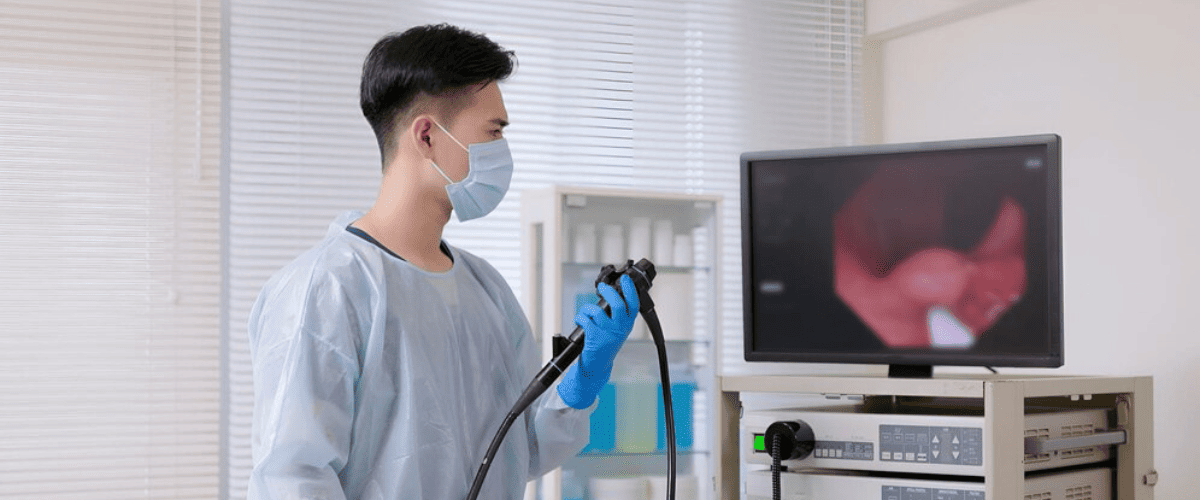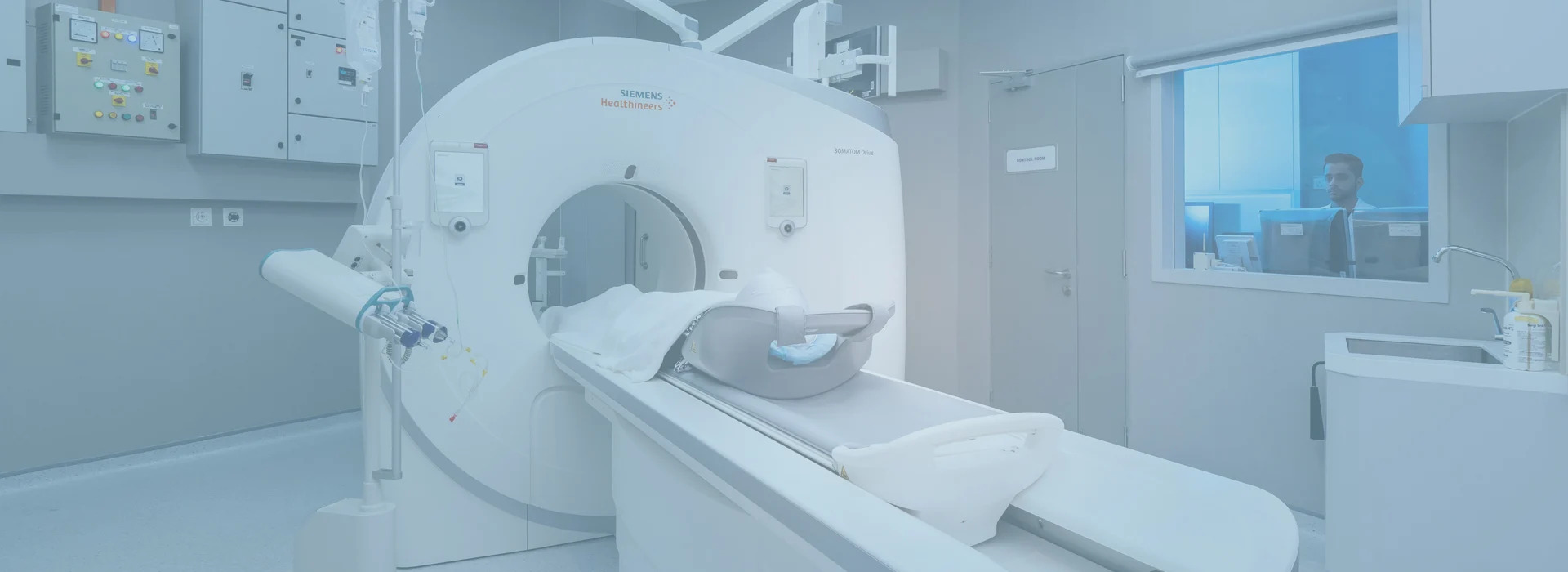
23 Apr Upper GI Endoscopy (OGDS) Procedure: What to Expect
Upper GI Endoscopy (OGDS) Procedure: What to Expect
By Island Hospital | April 21, 2025 08:00:00 AM
“I recommend an upper GI endoscopy,” your doctor says. “We’ll refer you to a gastroenterologist.”
As they explain further, you learn that this procedure is used to diagnose and treat digestive issues such as acid reflux, stomach ulcers, and inflammation.
Naturally, this brings up many questions in your head — what are the risks, how to prepare, and what actually happens during the procedure?
In this article, we’ll walk you through everything you need to know about OGDS, giving you a clear idea of what to expect.
If you have any further questions, be sure to discuss them with your doctor or gastroenterologist.
What is an Upper GI Endoscopy (OGDS)?
An upper GI endoscopy, also known as OGDS, is a procedure used to examine, diagnose, and treat issues in your upper digestive system.
During this procedure, a gastroenterologist – a doctor specialising in the digestive system – inserts an instrument called an endoscope into your body through your mouth.
The endoscope is a long, flexible tube with a small, lighted camera at the end. It will travel down your throat, oesophagus, stomach, and upper part of the intestine (duodenum).
It will share video images of these areas to a monitor, allowing the gastroenterologist to examine them, take biopsies, and perform any necessary treatments.
More on this in our next section on what to expect before, during, and after an OGDS.
Who Needs an OGDS?
An OGDS can be used to discover the reason for symptoms such as:
- Swallowing difficulties (dysphagia)
- Persistent nausea and vomiting for an unknown reason
- Vomiting blood
- Unexplained weight loss
- Reflux
- Upper GI bleeding
- Indigestion
- Abdominal pain
- Chest pain that is not heart-related
- Anemia
- Passing black stool
What Conditions Can It Diagnose?
This procedure can be used to identify conditions such as:
- GERD (gastroesophageal reflux disease)
- Stomach ulcers
- Inflammation
- Celiac disease
- Crohn’s disease
- Enlarged veins in oesophagus (oesophageal varices)
- Swallowing disorders
- Precancerous abnormalities, such as Barrett’s oesophagus
- Injury after ingesting harmful (caustic) substances
- Tumours that are cancerous and noncancerous
Learn how gastroscopy, a type of endoscopy, is used to diagnose oesophageal cancer.
What Problems or Issues Can It Treat?
Moreover, tiny tools can be attached to the endoscope and used to treat small problems such as:
- Repair holes
- Control bleeding
- Drain abscesses / fluids
- Fix blockages and open narrowed areas
- Insert medical devices such as feeding and drainage tubes
- Remove swallowed objects
- Remove abnormalities such as polyps (small growths) and tumours
- Band oesophageal varices
Suffering from abdominal pain? Discover the possible causes in this article on 8 Common Digestive Conditions You Might Be Experiencing.
Risks of Getting an OGDS
OGDS has low risk of complications, which may include:
- Bleeding from the area where tissue samples are taken or polyps are removed
- Infection
- Tearing of the upper GI tract
- Abnormal reaction to sedation or anesthesia, such as breathing or heart problems
If you have any concerns, be sure to discuss them with your doctor before the procedure.
What to Expect: Before, During, and After the Procedure

The entire procedure, including waiting, preparation, and recovery, will usually take around 2 to 4 hours. Rest assured, the hospital staff will be there to guide you every step of the way.
Before the Procedure
Your doctor may admit you a day before the procedure or place you under day care (same-day admission and discharge):
- Your doctor will explain the test, including the choice of sedation, possible biopsy, polyp removal, and associated risks or complications.
- You’ll be asked to sign a consent form agreeing to the procedure.
- Inform your doctor of all your medications, supplements, allergies, or previous side effects from sedation.
- You will be instructed to avoid eating too much fibre and meat on the day before your procedure. Stick to a soft diet and avoid heavy meals after 6PM.
- You will be asked to not eat or drink anything for at least 4 hours before your procedure.
- You may need to stop taking certain blood-thinning medications several days before your procedure. Do not stop taking them without asking your doctor.
- Tell your doctor if you have had heart valve replacement surgery (including implantable devices) and if you have received previous advice about taking antibiotics before a dental treatment or surgical procedure.
- Take your bowel preparation medicine as prescribed by your doctor.
- Arrange for someone to drive you home after the procedure. This is because the effects of sedation may linger up to 24 hours.
- You will be instructed to remove all dentures, jewelry, eyeglasses, contact lenses, and nail varnish before your procedure.
- Avoid bringing valuables on the day of the procedure.
During the Procedure
Next, let’s take a look at the procedure itself, which will usually take 10 to 15 minutes:
- You will be given a throat spray to numb your throat and prevent gagging. You will also be given intravenous sedation to ensure your comfort throughout the procedure.
- Next, you will lie on your left side. A plastic mouthpiece will be placed between your teeth to keep your mouth open and make it easier to pass the endoscope.
- Your doctor will insert the endoscope through your mouth and guide it down your oesophagus, stomach, and duodenum.
- Then, they’ll pump air through the endoscope into your stomach and duodenum. This makes it easier for them to see and examine your organs.
- Your doctor will examine the linings of your oesophagus, stomach, and duodenum shown on the monitor; and reinspect them as the endoscope is taken out.
- (By inserting tools through the endoscope) Your doctor may also remove foreign bodies or polyps if necessary, and take a biopsy if anything unusual is seen.
Do note that while you may feel mild discomfort during this procedure, it is generally painless.
After the Procedure
Once the procedure is complete and you’ve regained consciousness:
- You will be taken to the Observation Area to rest.
- You may experience mild bloating, cramping, or sore throat.
- Do not eat or drink until your gag reflex returns to avoid the risk of choking.
- Your doctor will discuss and explain the results to you. If a biopsy is taken, you may need to return after several days to see the findings.
- If your doctor finds that additional tests (e.g., ultrasound test, FibroScan, Computed Tomography Scan) are needed, you will be referred to the Imaging Department.
See the full endoscopy journey at Island Hospital with our virtual walkthrough.
When to Seek Medical Help
Once you’ve been discharged, call the emergency department immediately if you experience:
- Bloody vomitus, blackish or reddish stool
- Unexplained giddiness or faintness
- Severe ongoing abdominal pain
- Trouble swallowing
- Fever
- Sharp chest pain
- Throat pain
- Redness, tenderness, or swelling for more than 48 hours at the sedation injection area (either the hand or arm).
Island Hospital’s Emergency Hotline: +604 2268527
Have more questions about this procedure? Find the answers in our in-depth Gastroenterology FAQ on the specialists-in-charge, digestive health, and appointments.
Aftercare Tips and Safety Precautions
Sedation will affect your judgement and only wear off after about 24 hours. If you have had sedation:
- Arrange for someone to drive you home and stay with you for the next 24 hours.
- Drink plenty of fluids and eat a light diet.
- Rest at home for the rest of the day.
- Do not drive for the next 24 hours.
- Do not drink alcohol, smoke, take sleeping tablets (or any other mind-altering substances) for the next 24 hours.
- Do not operate machinery or electrical appliances.
- Do not sign legal documents or make important decisions.
- Do not return to work while under the effects of the sedative.
- Do not take any medication that is not prescribed by your doctor.
Take Control of Your Gut Health Today!
OGDS is a valuable procedure to diagnose and manage gastrointestinal conditions. While it may seem intimidating, understanding the process and its benefits can ease any anxiety.
At Island Hospital, our expert gastroenterologists offer advanced diagnostics and personalised treatment for all your digestive needs.
Let us guide you through your journey to recovery — Schedule an appointment today!
FAQ
Is OGDS painful?
No, it won’t be painful. You may experience mild discomfort or a gagging sensation, but a throat spray (numbing agent) and sedation helps minimise any discomfort.
Will I gag the whole time of the OGDS procedure?
Gagging is common when the endoscope is inserted, but it usually subsides quickly as the procedure progresses. A throat spray or sedation helps reduce this reflex.
Is sedation required for this procedure?
Your doctor will recommend whether sedation is required or not, based on your medical history and the procedure during the assessment. If sedation hasn’t been offered, you can always ask your doctor about it.
Will I be completely unconscious during sedation?
Sedation for an endoscopy is moderate, allowing you to feel relaxed and possibly forget the procedure, while still remaining conscious. Deep sedation and anaesthesia are reserved for special cases and are not commonly used.
Are there any alternative tests I can have instead?
Yes. Your doctor could discuss with you other ways of managing your condition:
- Surgery: To treat bleeding from the upper gastrointestinal tract.
- Angiography: The bleeding vessel is occluded after an X-ray of the vessels.
- Video capsule endoscopy: To view the gastrointestinal tract.
How long does OGDS take?
The procedure itself usually takes between 10 to 15 minutes, though it might take longer if a biopsy is needed. You may also spend additional time in recovery if sedation is used.
How often should I get an OGDS done if I have a chronic digestive condition?
This depends on your specific condition. Patients with conditions like Barrett’s oesophagus may require regular screenings every 2-3 years to monitor healing.
Consult with your doctor and follow their recommendations. Schedule an appointment today!.
Is OGDS safe for elderly patients?
Yes, OGDS is generally safe for elderly patients. However, doctors may take extra precautions with sedation and post-procedure monitoring to ensure their safety.






